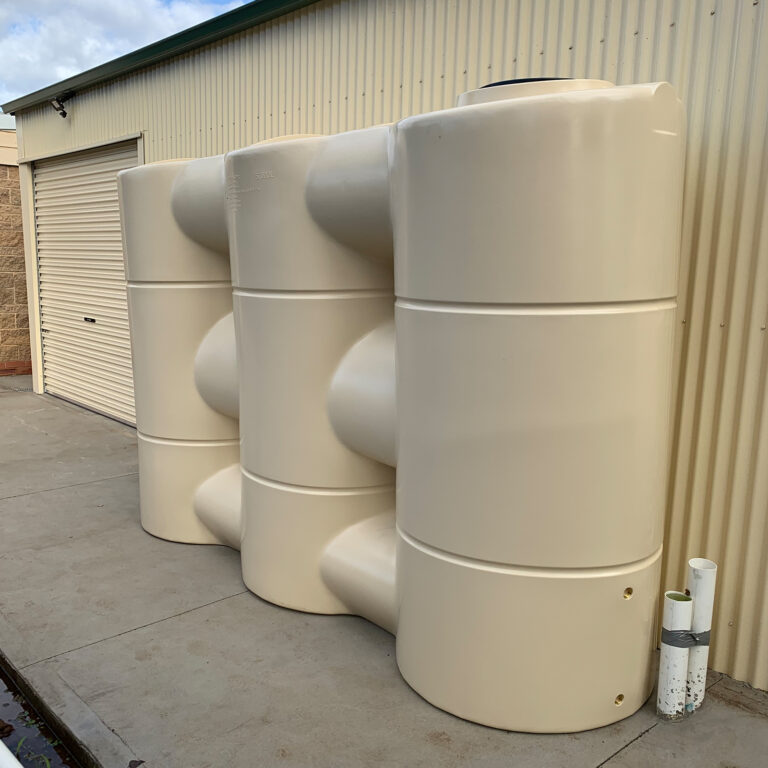Unveiling the Benefits of Rainwater Tanks in Minimizing Water Expenses and Environmental Effect
In a world where sustainability and cost-efficiency are increasingly important, the application of rainwater storage tanks provides a practical and environmentally conscious option. The benefits of including rain tanks into property or commercial residential properties expand beyond simple water costs decreases. By discovering the complex benefits of such systems, one can reveal a riches of insights into exactly how they contribute to a much more sustainable future while favorably affecting both financial resources and the setting.
Cost Savings With Rainwater Containers
When taking into consideration the execution of rain containers, considerable expense savings can be achieved through efficient water monitoring techniques. Rain gathering provides a sustainable remedy that not just lowers water expenses yet additionally reduces the pressure on metropolitan water sources. By catching and storing rain for different non-potable uses such as irrigation, commode flushing, and laundry, homes and businesses can significantly lower their dependence on treated water from the grid, bring about significant expense financial savings gradually.
By utilizing gathered rainwater for activities that do not call for potable water, such as sprinkling yards or washing autos, individuals can reduce their total water consumption from the mains supply, resulting in reduced water costs. In addition, rain containers can aid alleviate the impact of water restrictions or droughts by supplying an alternative water resource for essential jobs, making sure connection in water supply without incurring excessive expenses.

Ecological Effect Reduction
Carrying out rainwater containers not only causes cost financial savings but additionally contributes significantly to minimizing the ecological impact connected with water intake. By recording rainwater that would or else run off right into tornado drains, rain storage tanks help alleviate stress on conventional water sources like rivers and storage tanks. This decreased demand for municipally dealt with water results in power cost savings and a decrease in the carbon impact related to water therapy and circulation processes.
Moreover, using rain for activities such as horticulture, irrigation, and cleaning decreases the demand for utilizing cured water for non-potable functions. This preservation of drinkable water helps in maintaining water resources for essential usages and reduces the energy-intensive procedures included in dealing with water to satisfy drinking criteria.

Water Costs Decrease Advantages
The installation of rainwater containers supplies considerable monetary advantages via decreases in water expenses. By gathering and storing rain for different home uses, such as sprinkling gardens, flushing toilets, or doing washing, house owners can substantially decrease their dependence on the local water system. This, consequently, leads to a recognizable decrease in water consumption from typical sources, causing reduced water expenses at the end of each billing cycle.
Rainwater is a cost-free and sustainable resource that can supplement or perhaps replace the demand for using treated water for non-potable purposes. Consequently, families with rain containers can see a significant decline in their total water expenses gradually. Additionally, throughout periods of water limitations or dry spell, having a rainwater tank can supply a beneficial alternative water resource, further minimizing the dependence on pricey municipal water materials.
Basically, purchasing a rain tank not only adds to environmental conservation however additionally uses tangible financial benefits by decreasing water expenses and promoting long-lasting expense financial savings for house try this web-site owners.
Lasting Water Monitoring Solutions
Provided the financial advantages and lowered dependence on community water products that rainwater storage tanks provide, checking out sustainable water monitoring services comes to be a sensible following action for homeowners looking to optimize their water usage. By utilizing rain tanks to record and store rain, property owners can lower their reliance on typical water sources, such as metropolitan supplies or groundwater, therefore contributing to water preservation helpful site initiatives.

In addition to rainwater harvesting, sustainable water management remedies might include carrying out water-efficient home appliances, fixtures, and landscaping techniques. By taking on these lasting water administration techniques, house owners can not just maximize their water use however also add to ecological conservation and decrease their water expenses in the long run.
Area Water Source Conservation

Moreover, community involvement can encompass the implementation of water-saving innovations and methods on a larger scale. Encouraging the adoption of rain containers, greywater recycling systems, and efficient watering methods within neighborhoods can cause substantial reductions in water consumption. Additionally, fostering a feeling of cumulative duty for water preservation can advertise lasting actions and methods among community members.
Additionally, community water resource preservation efforts can lead the way for stronger bonds among residents and a about his common commitment to environmental stewardship. By functioning together to protect and maintain water sources, areas can add substantially to a much more sustainable and resistant future.
Final Thought
To conclude, rain storage tanks provide substantial price financial savings, ecological benefits, and add to sustainable water monitoring remedies. By minimizing water bills, preserving water resources, and decreasing environmental impact, rainwater containers play a vital role in advertising water conservation and sustainability - Slimline water tanks. Their execution not only advantages individual houses however likewise adds to the wider objective of community water source management and preservation
Comments on “Reliable Slimline Water Tanks: Optimize Your Water Storage Capability”